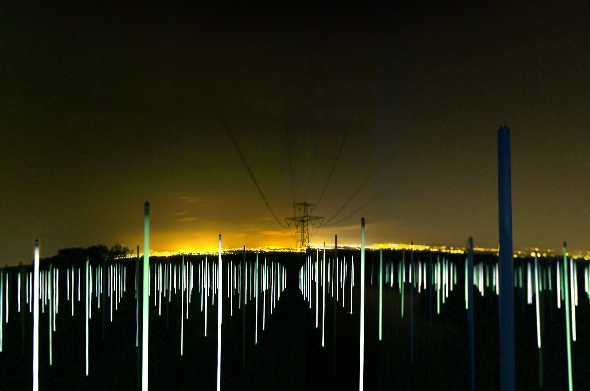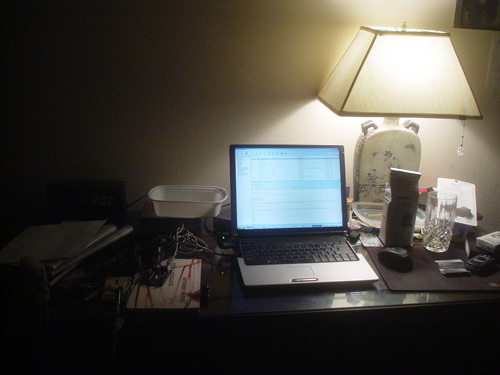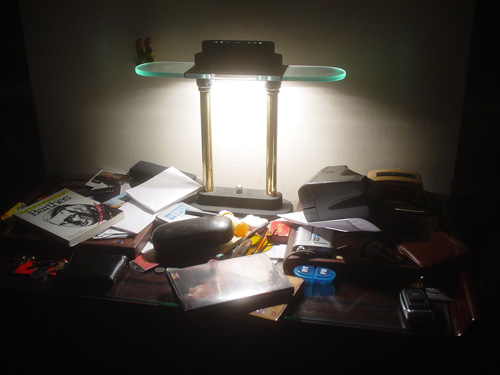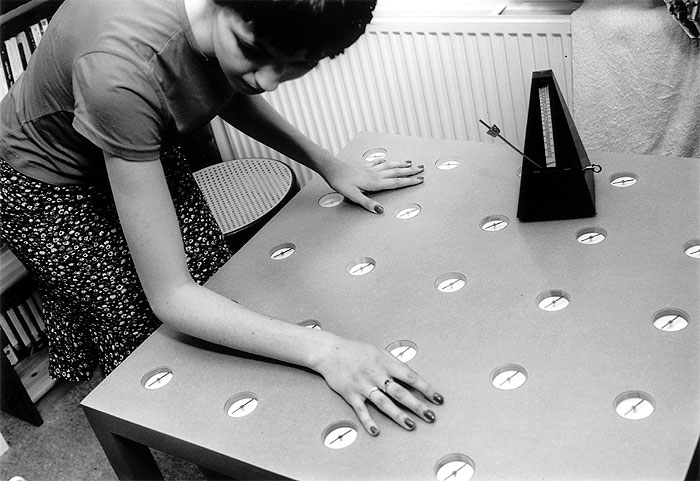more thoughts
I included this quote at the end of my presentation:
Electronic objects are not only “smart”, they “dream” – in the sense that they leak radiation into the space and objects surrounding them, including our bodies. Despite the images of control and efficiency conveyed through a beige visual language of intelligibility and smartness, electronic objects… are irrational – or at least allow their thoughts to wander. Thinking of them in terms of dreaminess rather than smartness opens them to more interesting interpretations.I had mentioned something about the necessity of self-shielding in order to prevent feedback from the sensor and amplifier circuit. Usman felt that this could actually be an interesting element, and once he pointed this out I found it very appealing. It could add an "irrational" element to the table. It has to do with the physical properties of the amplifier, even a misuse of circuitry. There are two ways which this could be introduced: (1) the sensor near the amplifier circuit could create feedback, or (2) it is possible by incorrectly configuring an amplifier circuit to create distortion or junk, or by attaching two amplifers in series.- Anthony Dunne,
Hertzian Tales
There needs to be a balance with the chaos though; too much chaos and it becomes meaningless. Just enough chaos to make it interesting.
If it is an irrational table, another thing to consider is how it should look. Should it still be a standard, rectangular desk table? But the fact that it has electronics might make it strange enough without an odd shape.
Considering the material, my brother suggested creating it with a somewhat soft surface, possibly something like silicone. This makes sense because (1) the table is for electronics... perhaps now you could drop you cellphone, laptop on it less gingerly than on a hard table, with less fear of damaging them. (2) with this metaphor from Dunne about how electronic devices "dream", the table could be their soft bed. My working title for the project is now Table for Electronic Dreams.
I am a bit worried that there are only 7 weeks left in the semester! I think my next priority should be to finalize a circuit and create a small prototype, with 4-6 lights and start trying to figure out materials and construction details.
Other reference projects which have been pointed out to me recently:

Energy Fluxion Band
Sort of my idea as a wearable. They seem to be using LED bar graph drivers... I hadn't thought of this, but I could have each coil attached to multiple LEDs, possibly for greater contrast in displaying field strength. I actually bought some of these from digikey for some reason, and I think I might try this out.

Field, Richard Box
1,301 florescent tube lights under high power lines drawing powering wirelessly! I would like to be able to recapture some of the lost energy. I need to check how much AC voltage comes along the induction coil- it is probably not very much at all. But if I run it thorough a bridge rectifier, that would be a way to store some energy.

The Bubbles of Radio
This doesn't have much to do with my project directly, but I love it! Different hertzian frequencies imagined as Haeckel type organisms, with fake latin names. She made a beautiful old book with medical style drawings.




